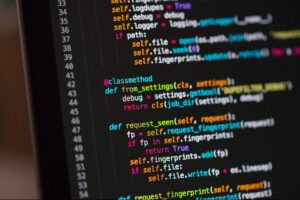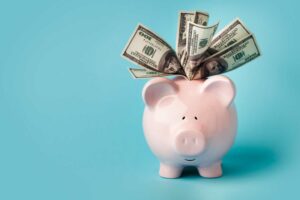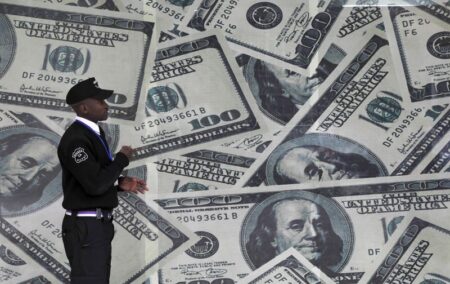By Wayne Cole
SYDNEY (Reuters) -The dollar was steady against the yuan on Tuesday as markets digested policy statements out of China that were short on big stimulus measures, while a rebound in Tokyo inflation seemed to take Japan a step closer to the end of negative interest rates.
Crypto mania is still running wild, with bitcoin trading near $66,000, having surged to $68,828 earlier in the session, just shy of the record peak of $68,999.99 it touched in November 2021.
The largest cryptocurrency by market value is up around 57% this year, benefiting from flows into exchange-traded funds launched in the United States.
Early news out of China’s National People’s Congress (NPC) contained few surprises, with Beijing sticking with an ambitious economic growth target of 5% and a budget deficit of 3%.
Analysts say meeting the target will be a challenge as a protracted property crisis, low consumption, slow global growth and geopolitical tensions drag on activity.
“There are formidable challenges for the around 5% GDP growth target, in our opinion, as the recovery has been slow almost towards the end of first quarter and private enterprises’ investment confidence remains low as well,” said Redmond Wong, Chief China strategist at Saxo.
Spot yuan opened at 7.1950 per dollar and was changing hands at 7.1985, while the was little changed at $7.2100 as markets hoped more concrete stimulus measures would emerge. [CNY/]
The Japanese yen held steady after data showed Tokyo core inflation sped up to 2.5% in February, from 1.8% the previous month. A measure excluding food and energy did slow to 3.1%, but stayed above the Bank of Japan’s 2% target.
“Inflation jumped to well above 2% and will remain around that level for a few months,” by Marcel Thieliant, head of Asia-Pacific at Capital Economics. “Accordingly, we’re sticking to our forecast that the Bank of Japan will hike interest rates into positive territory next month.”
Many analysts expect the BOJ to move negative rates to zero in April if Japan’s spring wage negotiations result in solid pay hikes, which should boost consumer spending.
The dollar was last at 150.44 yen, having again shied away from resistance around 150.85, which has capped the currency for more than three months now.
A break higher would open the way to November’s top at 151.92, but would also run the risk of provoking Japanese intervention.
Markets currently imply around a 64% chance the Federal Reserve will start cutting U.S. rates in June and ease by around 75 basis points this year.
Fed Chair Jerome Powell has a chance to update investors on his own outlook when he appears before lawmakers on Wednesday and Thursday.
“We should expect Fed Chair Powell to reiterate patience and emphasize (there is) no hurry to cut rates,” said Christopher Wong, currency strategist at OCBC in Singapore.
“However, these are known knowns and should not affect markets too much unless Powell signals more forceful pushbacks, that could lead to further hawkish re-pricing.”
The euro idled at $1.08515, having tested resistance around $1.0866. The , which measures the currency against six major peers, edged higher to 103.87.
The European Central Bank (ECB) meets on Thursday and markets are convinced it will keep rates at 4.0%. Futures imply an 88% probability that cuts will start in June and have priced in 89 basis points of easing for 2024.
“The persistence of sticky services CPI and signs of services picking up more broadly in survey data suggest that ECB will continue to highlight patience and further maintaining of restrictive policy,” argued analysts at Westpac.
“After holding tests below $1.0800 last week, looks set to test the $1.0900-50 area, the middle its range since late December.”
Sterling eased to $1.2682 ahead of the British budget on Wednesday. Finance Minister Jeremy Hunt has been trying to dampen speculation about big pre-election tax cuts.
Read the full article here












